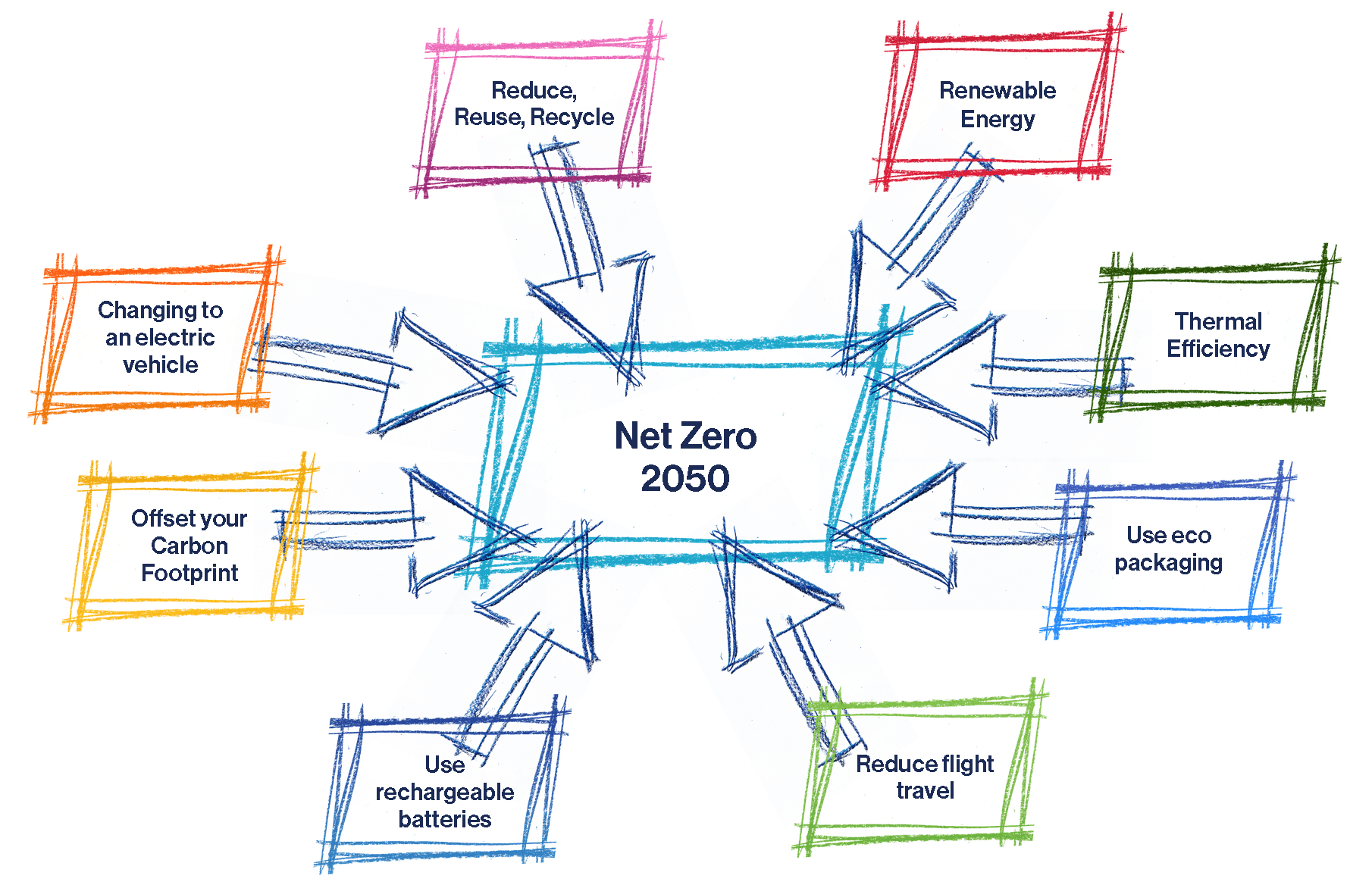
Use Less, Waste Less
Resources to help your business reduce Carbon Footprint

Resources to help your business reduce Carbon Footprint
Global temperatures have risen by 1⁰C since pre-industrial levels, following the Paris Climate Agreement and COP26 in 2021, the target is to limit the increase to 1.5⁰C throughout the world. This should decrease the devastating impacts of extreme weather-related events, rising sea levels, droughts and the resulting migration of people, food poverty and loss of natural habitat.
SME’s
Sign up to the SME Business Climate Hub, this will register your commitment, give guidance and tools and a reporting structure for your action plan.
Larger businesses
Can commit by signing up to Race to Zero through one of these organisations: Business Ambition for 1.5 C – Our Only Future, Business Declares, The Climate Pledge, Exponential Roadmap Initiative and Planet Mark.
Here are some initial steps that you can start taking in your business today to reduce your emissions:
The production and use of natural resources for energy create the largest levels of greenhouse gases.
Links: Government approved list of approximately 14,000 energy efficient products Energy Technology List Home: Energy Technology List (beis.gov.uk)
Reducing heat loss from a building will create carbon saving benefits.
WRAP – WRAP – Circular Economy & Resource Efficiency Experts
Government approved Waste Brokers – Waste carriers, brokers and dealers (data.gov.uk)
Waste Transfer note – Duty of care waste transfer note form – GOV.UK (www.gov.uk)
When you have worked through every process and reduced your carbon footprint and shared your findings with other businesses, to finally reach Net Zero you may need to offset that last part of carbon, but this should absolutely be the last resort.
You need to know what your carbon footprint is before you can devise a plan for achieving net zero.
Once you have a good understanding, create a reduction plan with targets, add this into your business plan and communicate to all staff to encourage inclusion and action. Create a reporting method to show all actions and the results.
Our Government has set a target of halving our carbon footprint by 2030 and reaching net zero by 2050.
This involves reducing the emissions of Greenhouse Gases that are directly or indirectly produced, including Carbon dioxide from burning Fossil Fuels, Methane for decomposition of Organic waste, Nitrous oxide from agriculture, Fluorinated gases from industrial and refrigerated sources and Nitrogen trifluoride from manufacturing sources.
Everyone is encouraged to use less and waste less and all businesses are encouraged to commit to this target by pledging their intention and creating an achievable plan.
The SME Business Climate Hub is here to help small businesses commit their climate goals.
Working with companies in the environmental sector to regulate carbon footprint.
Carbon calculator, helping to start the process, what to focus on, and what measures to take.
Offering 75% contribution to installation in a domestic property.
T&Cs apply.
Supports authorities & industrial companies in preserving the environments natural capital.
Consulting advice environment, climate and economics issues for the sustainable trade.
Help businesses achieve and maintain their ISO certifications, including sustainable ISO 14001.
Recycles waste from the community making them into usable, high quality products.
Using seaweed’s fast-growing feature to extract CO2 from our oceans and atmosphere.
